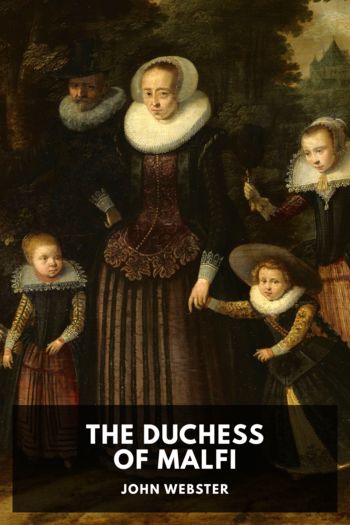author - "John Webster"

on them. Could I be one of their flattering panders, I would hang on their ears like a horseleech, till I were full, and then drop off. I pray, leave me. Who would rely upon these miserable dependencies, in expectation to be advanc'd to-morrow? What creature ever fed worse than hoping Tantalus? Nor ever died any man more fearfully than he that hoped for a pardon. There are rewards for hawks and dogs when they have done us service; but for a soldier that hazards his limbs in a battle, nothing but a kind of geometry is his last supportation.
DELIO. Geometry?
BOSOLA. Ay, to hang in a fair pair of slings, take his latter swing in the world upon an honourable pair of crutches, from hospital to hospital. Fare ye well, sir: and yet do not you scorn us; for places in the court are but like beds in the hospital, where this man's head lies at that man's foot, and so lower and lower. [Exit.]
DELIO. I knew this fellow seven years in the galleys For a notorious murder; and 'twas thought The cardinal

Description
John Webster was a later contemporary of Shakespeare, and The Duchess of Malfi, Webster’s best known play, is considered among the best of the period. It appears to have been first performed in 1612–13 at the Blackfriars before moving on to the larger and more famous Globe Theatre, and was later published in 1623.
The play is loosely based on a real Duchess of Amalfi, a widow who marries beneath her station. On learning of this, her brothers become enraged and vow their revenge. Soon the intrigue, deceit, and murders begin. Marked by the period’s love of spectacular violence, each character exacts his revenge, and in turn suffers vengeance at the hands of others. Coming after Shakespeare’s equally sanguine Hamlet and Kyd’s The Spanish Tragedy, Webster’s The Duchess of Malfi brings to a close the era of the great Senecan tragedies of blood and revenge. As the Jacobean period progressed, the spectacle became more violent and dark, reflecting the public’s growing dissatisfaction with the corruption of King James’ court.

on them. Could I be one of their flattering panders, I would hang on their ears like a horseleech, till I were full, and then drop off. I pray, leave me. Who would rely upon these miserable dependencies, in expectation to be advanc'd to-morrow? What creature ever fed worse than hoping Tantalus? Nor ever died any man more fearfully than he that hoped for a pardon. There are rewards for hawks and dogs when they have done us service; but for a soldier that hazards his limbs in a battle, nothing but a kind of geometry is his last supportation.
DELIO. Geometry?
BOSOLA. Ay, to hang in a fair pair of slings, take his latter swing in the world upon an honourable pair of crutches, from hospital to hospital. Fare ye well, sir: and yet do not you scorn us; for places in the court are but like beds in the hospital, where this man's head lies at that man's foot, and so lower and lower. [Exit.]
DELIO. I knew this fellow seven years in the galleys For a notorious murder; and 'twas thought The cardinal

Description
John Webster was a later contemporary of Shakespeare, and The Duchess of Malfi, Webster’s best known play, is considered among the best of the period. It appears to have been first performed in 1612–13 at the Blackfriars before moving on to the larger and more famous Globe Theatre, and was later published in 1623.
The play is loosely based on a real Duchess of Amalfi, a widow who marries beneath her station. On learning of this, her brothers become enraged and vow their revenge. Soon the intrigue, deceit, and murders begin. Marked by the period’s love of spectacular violence, each character exacts his revenge, and in turn suffers vengeance at the hands of others. Coming after Shakespeare’s equally sanguine Hamlet and Kyd’s The Spanish Tragedy, Webster’s The Duchess of Malfi brings to a close the era of the great Senecan tragedies of blood and revenge. As the Jacobean period progressed, the spectacle became more violent and dark, reflecting the public’s growing dissatisfaction with the corruption of King James’ court.